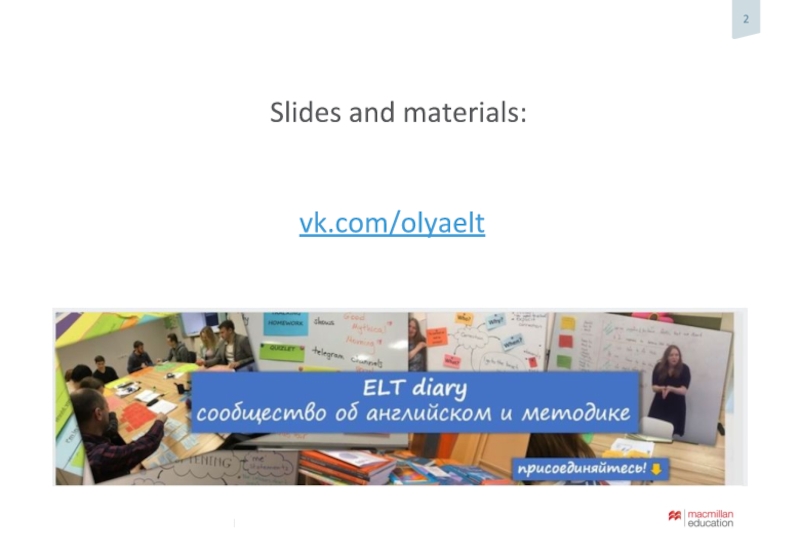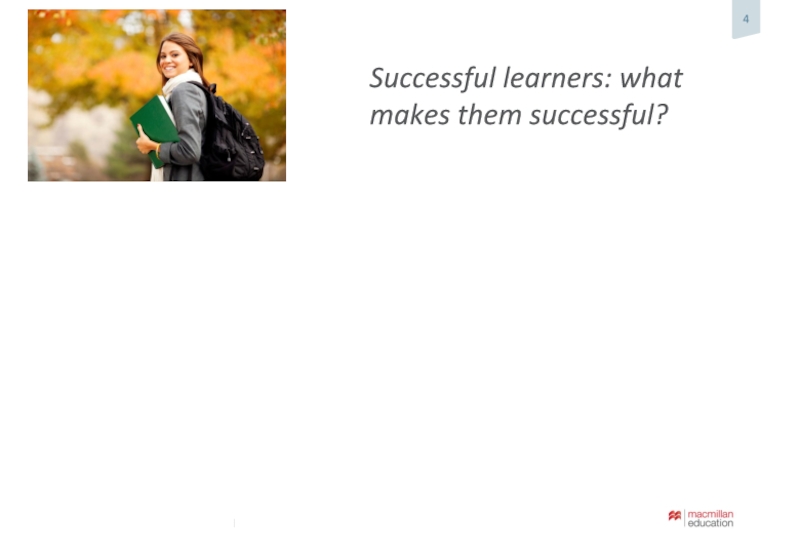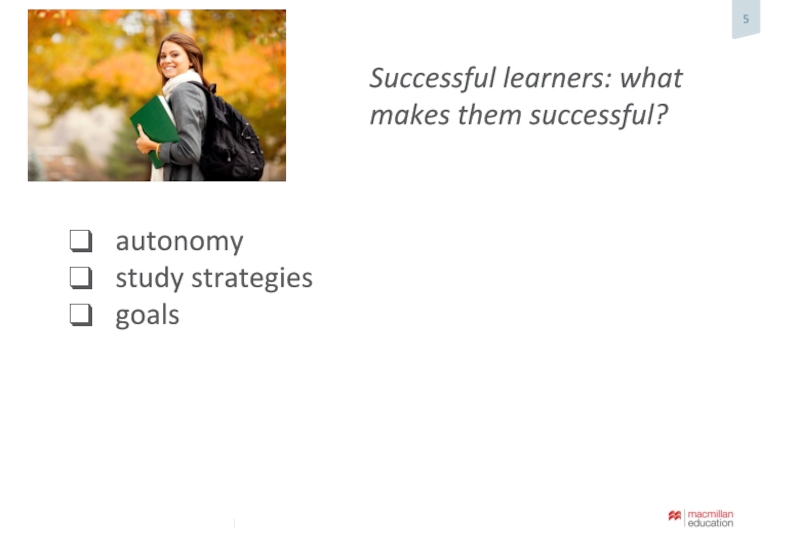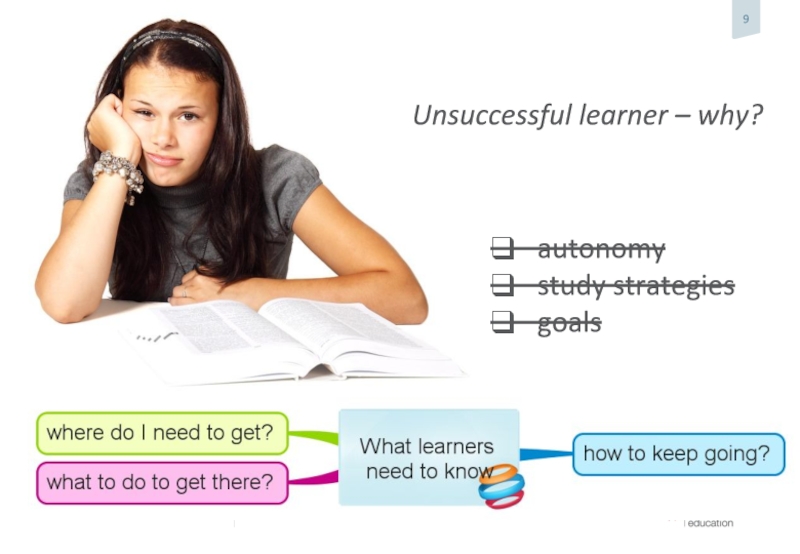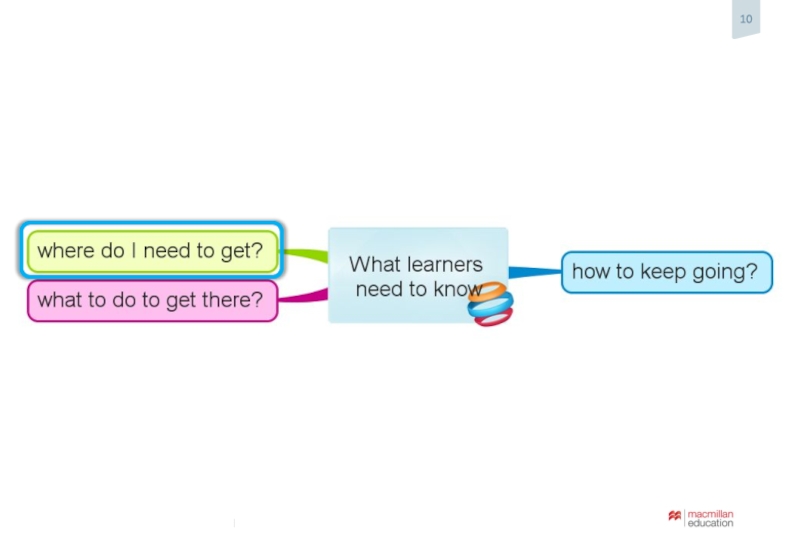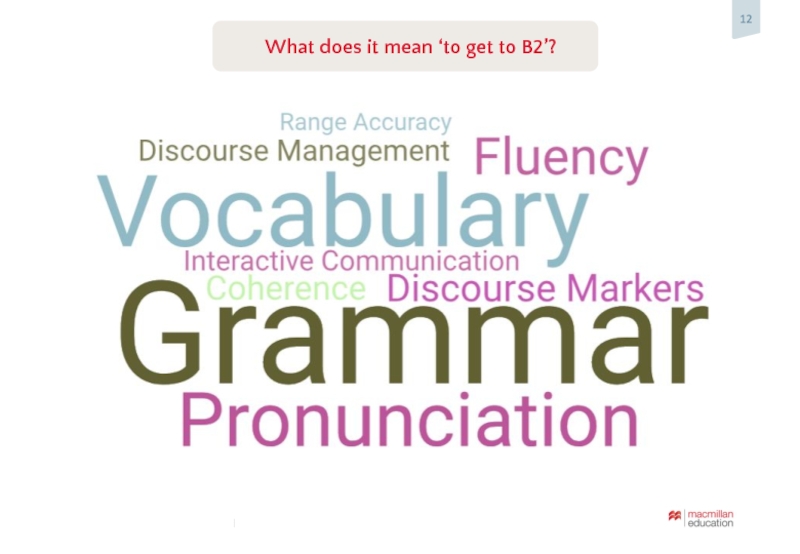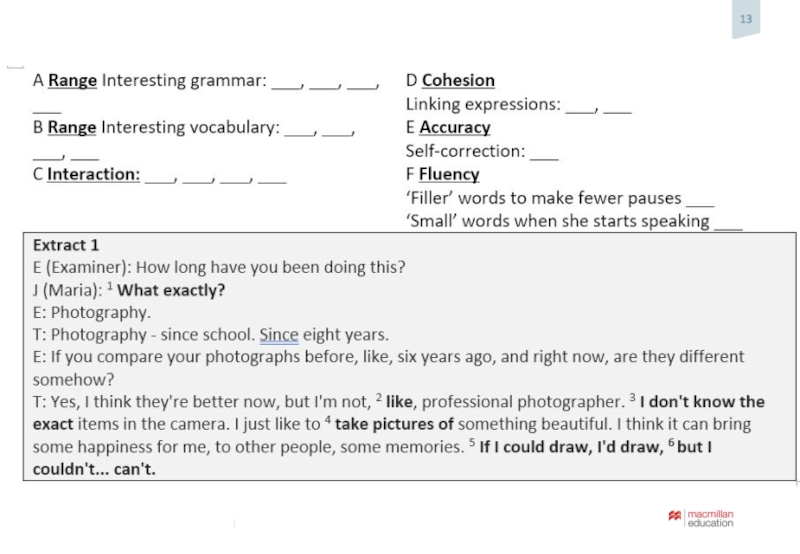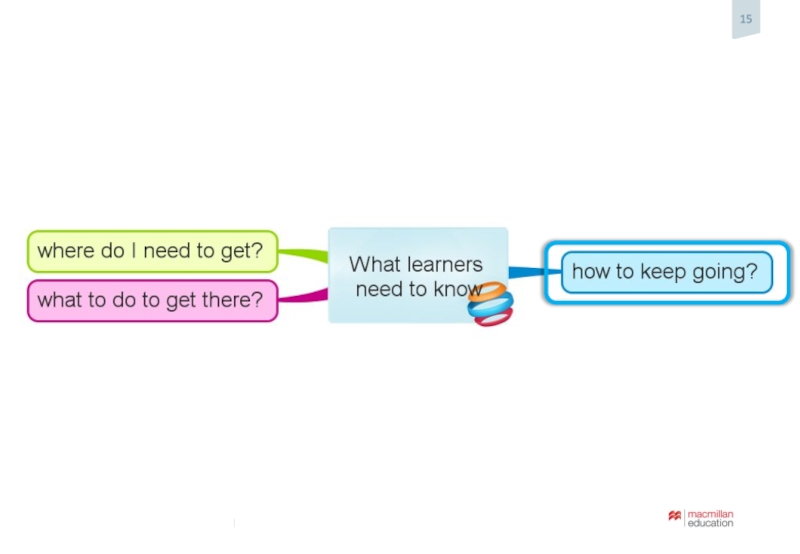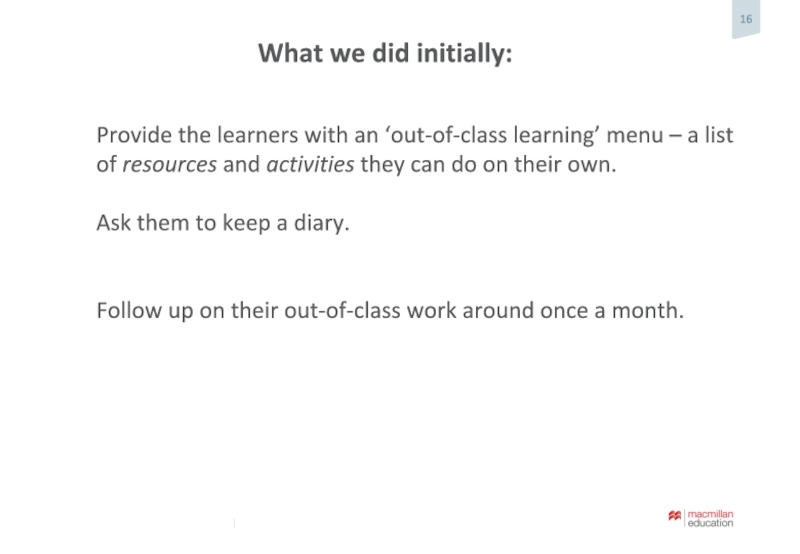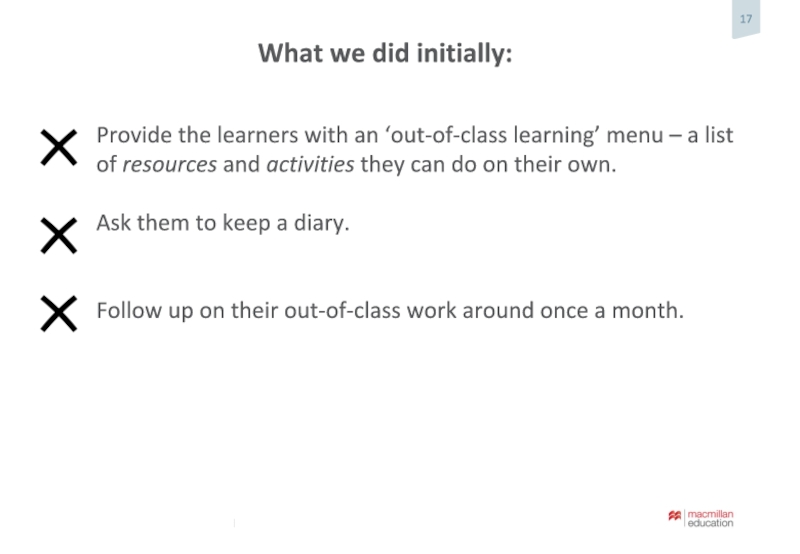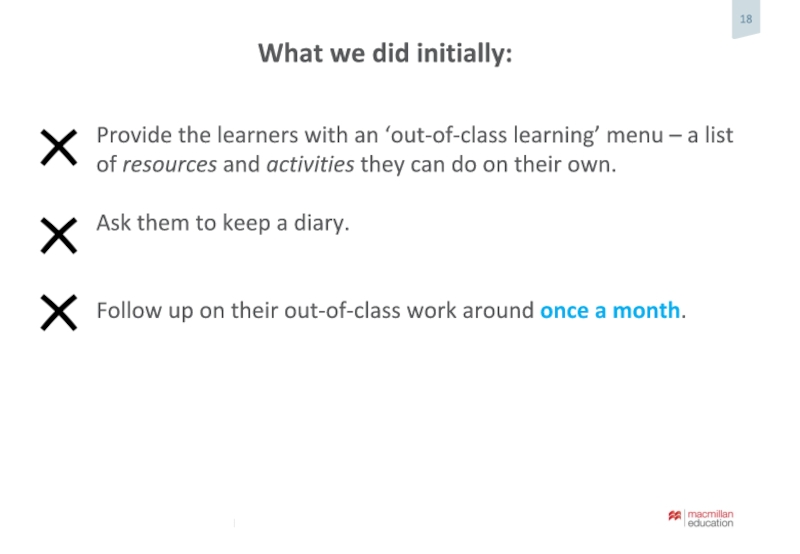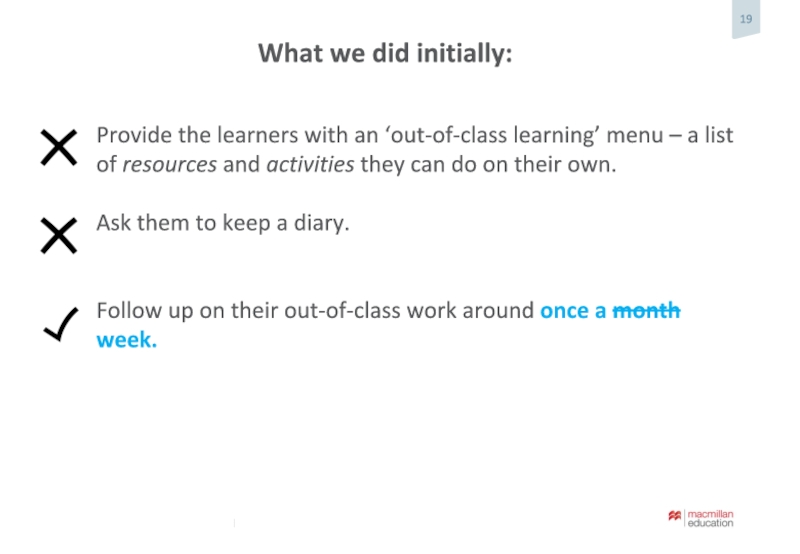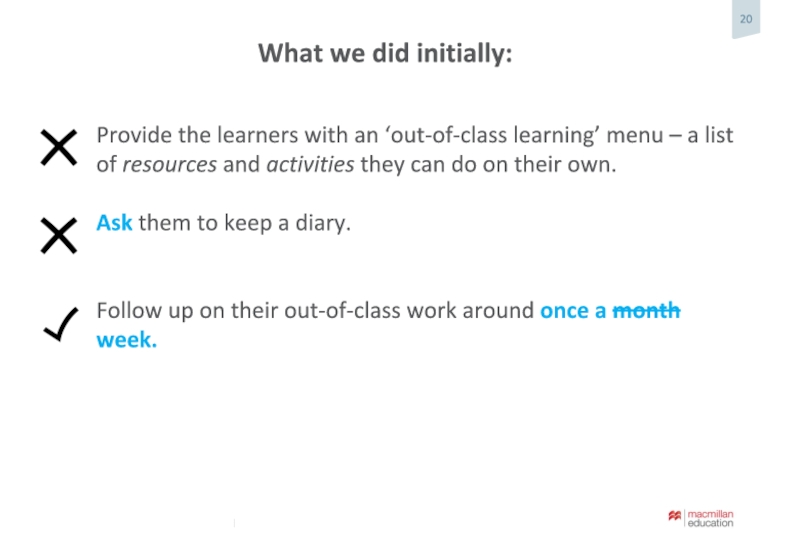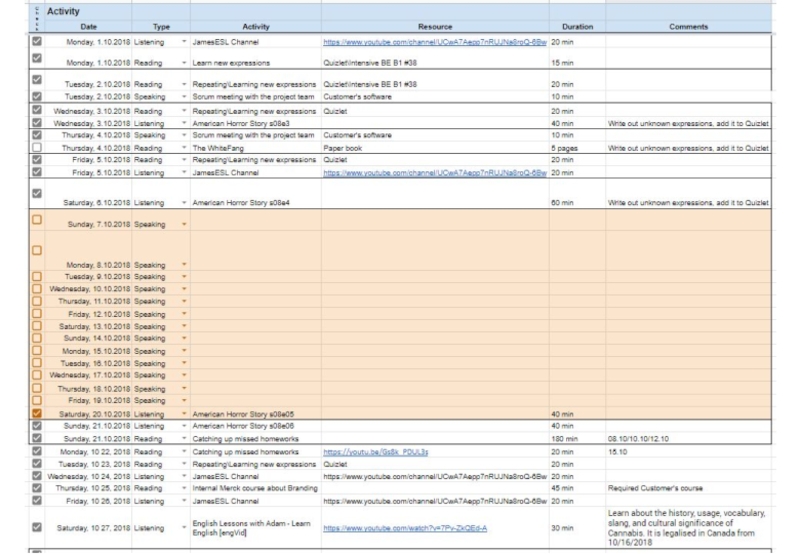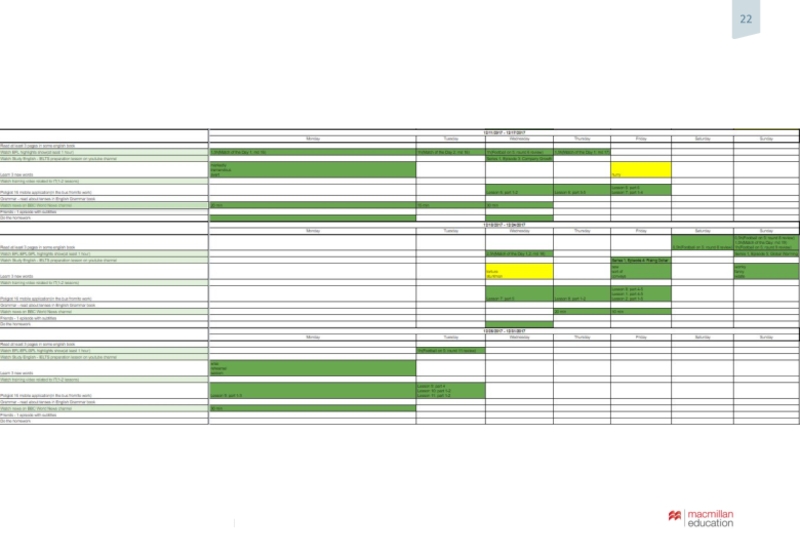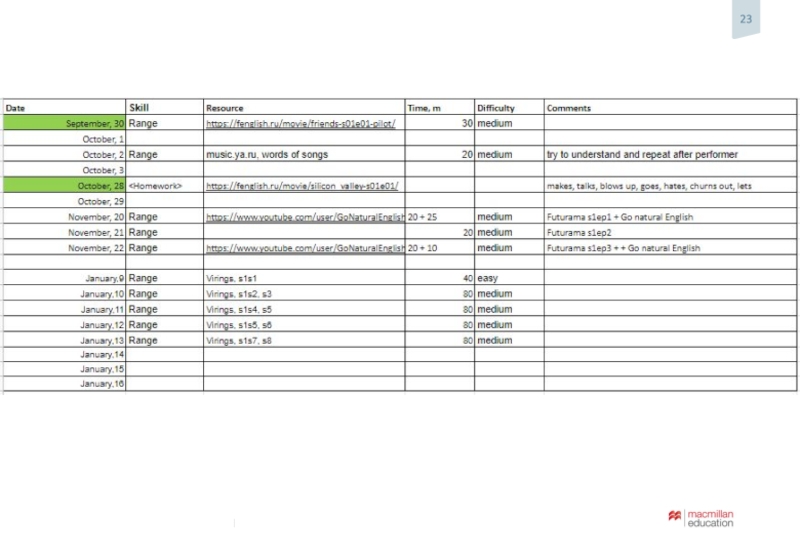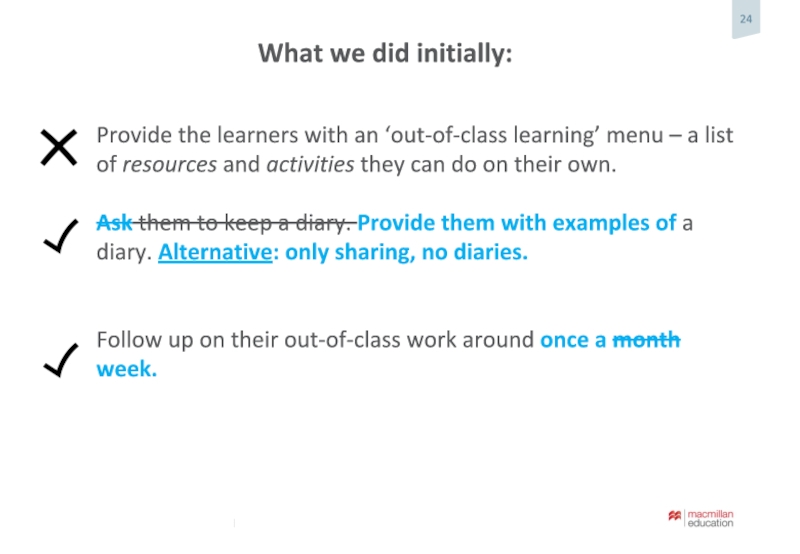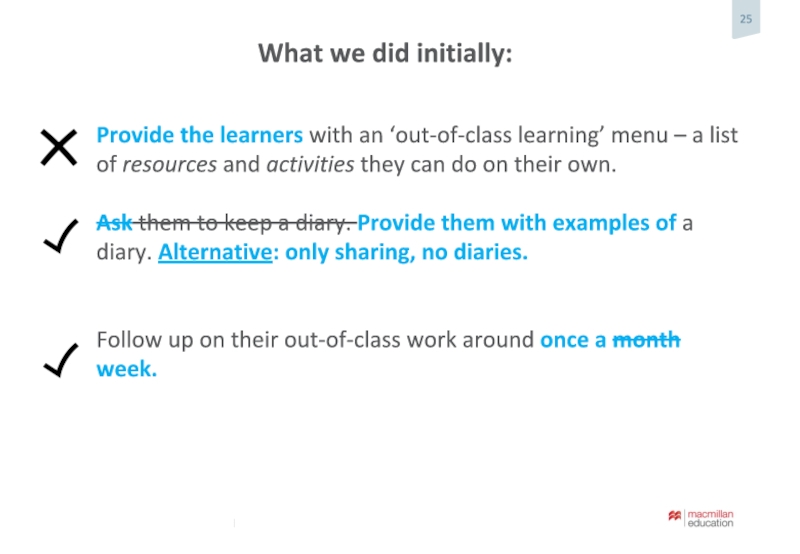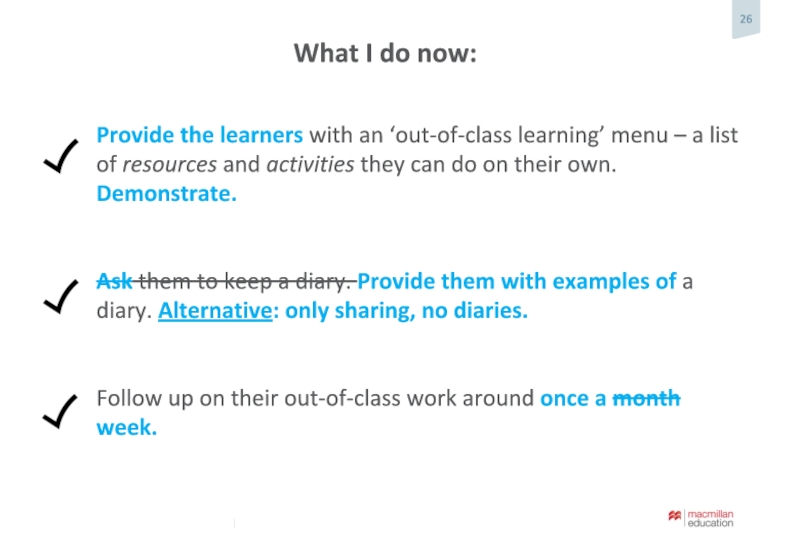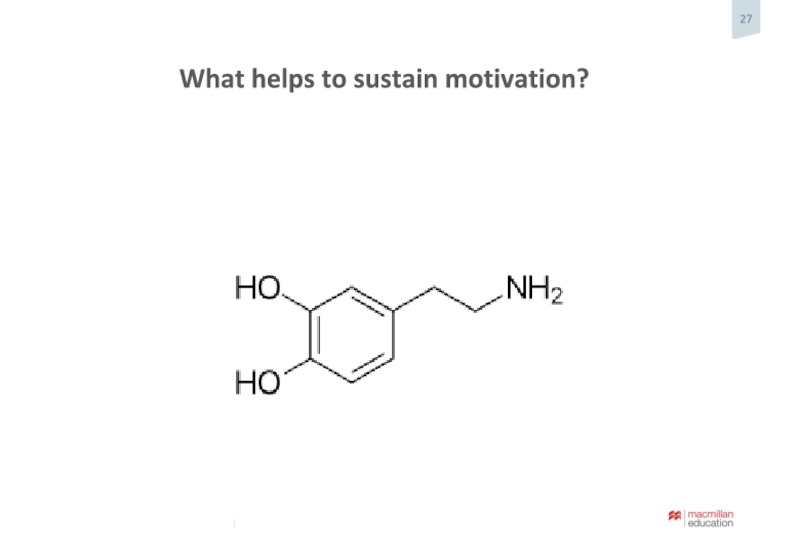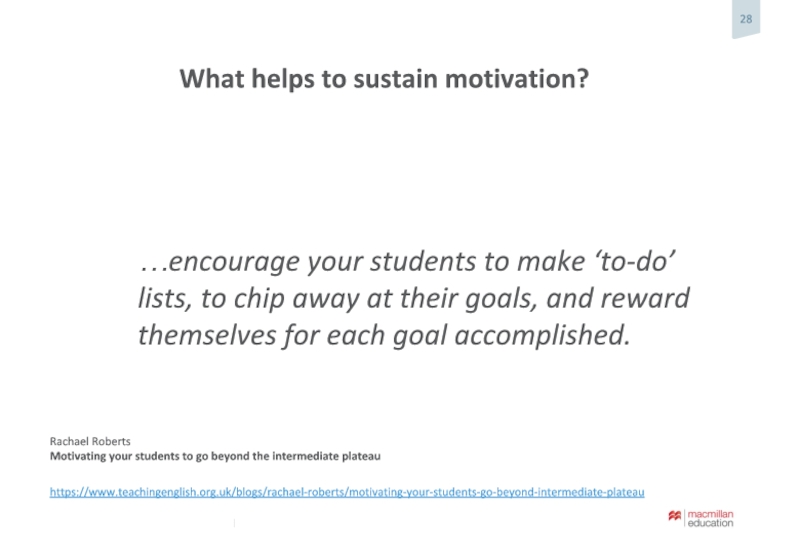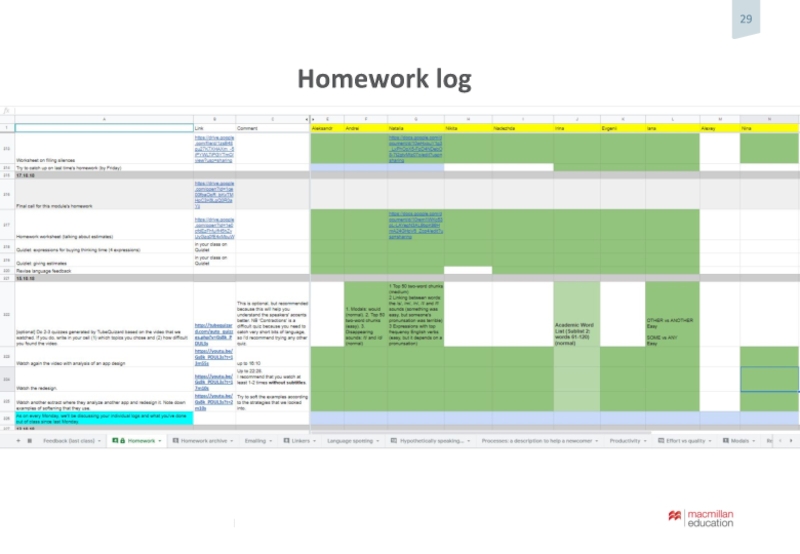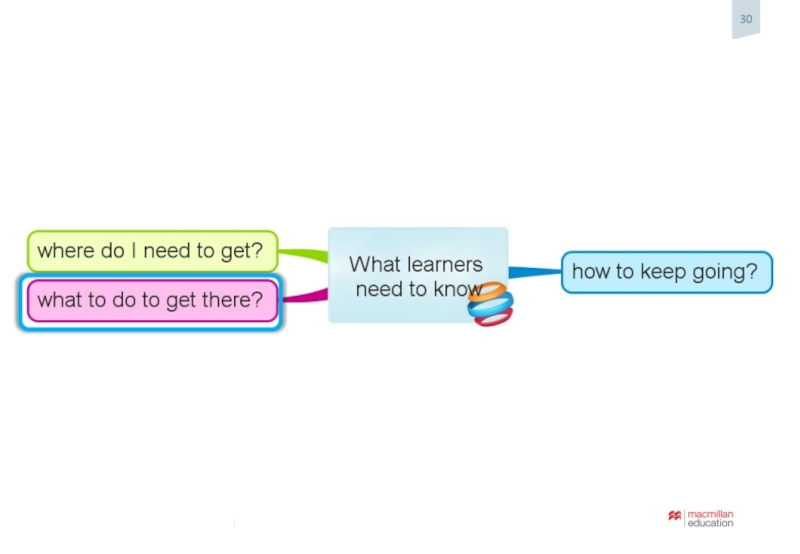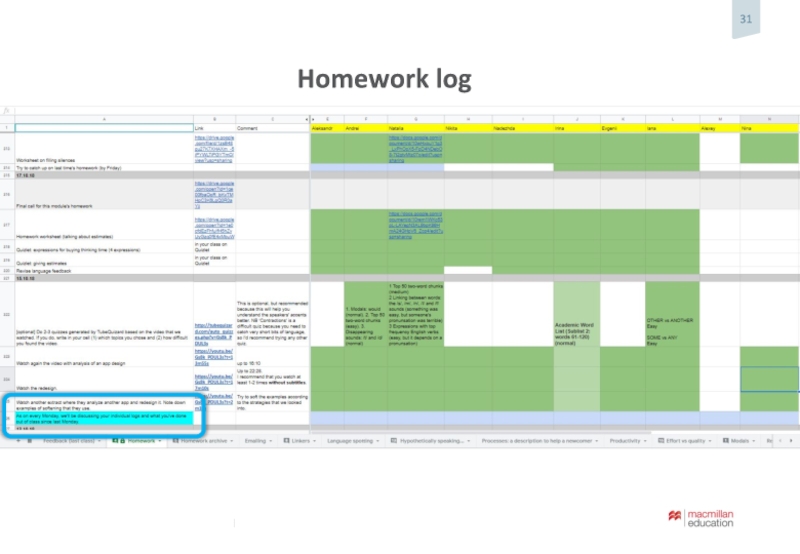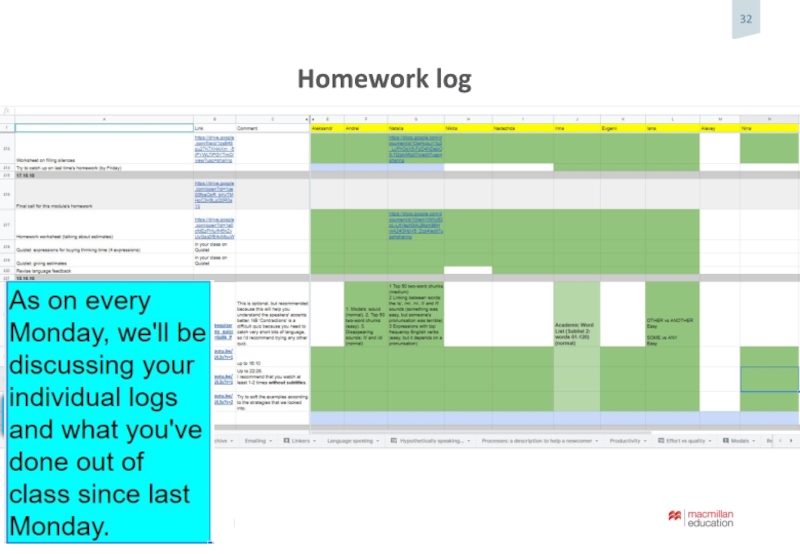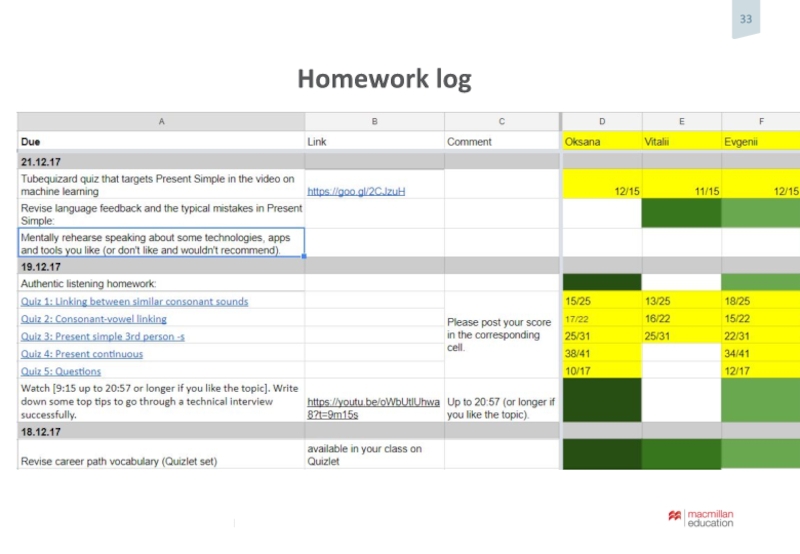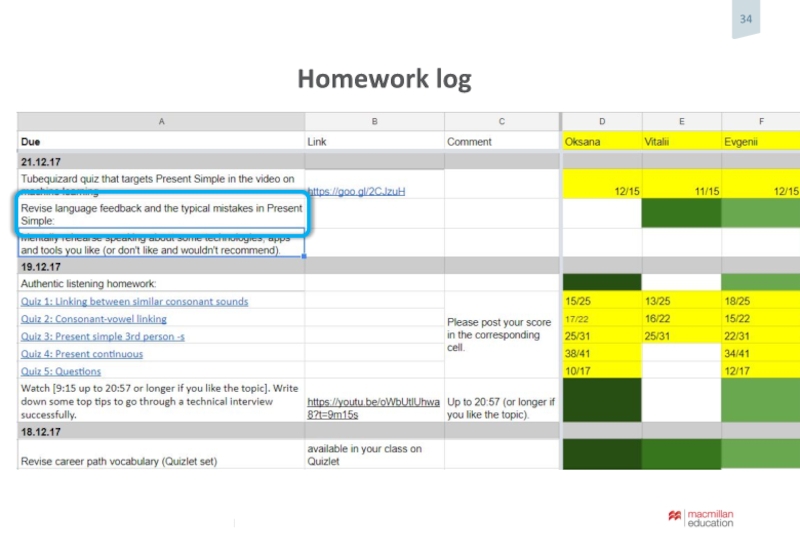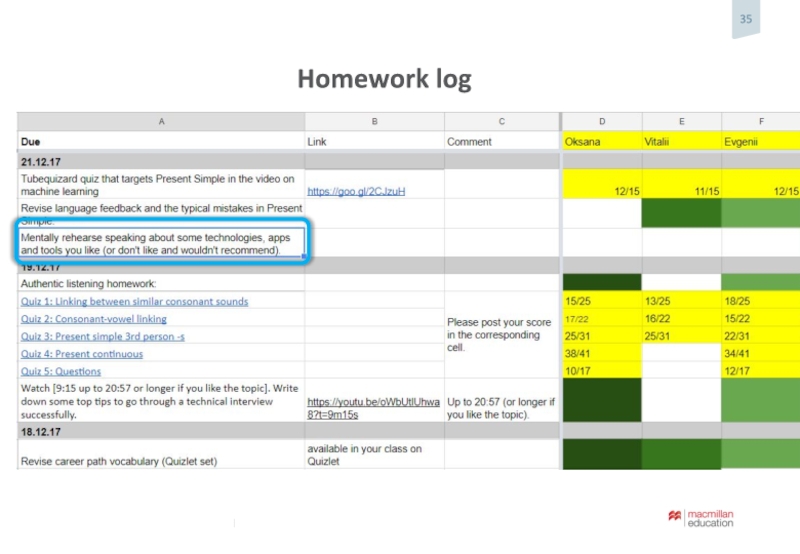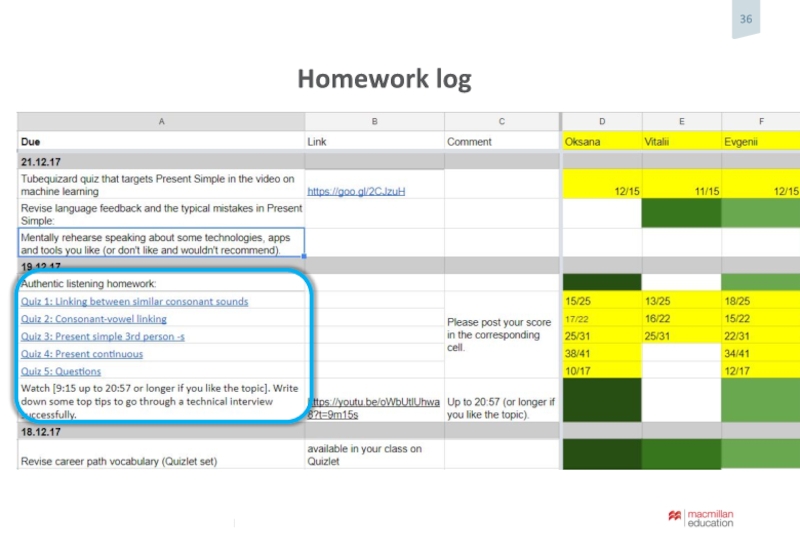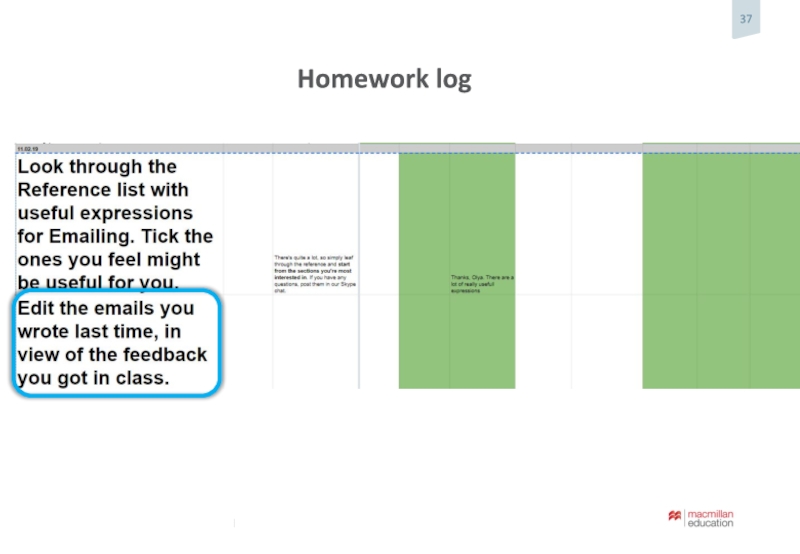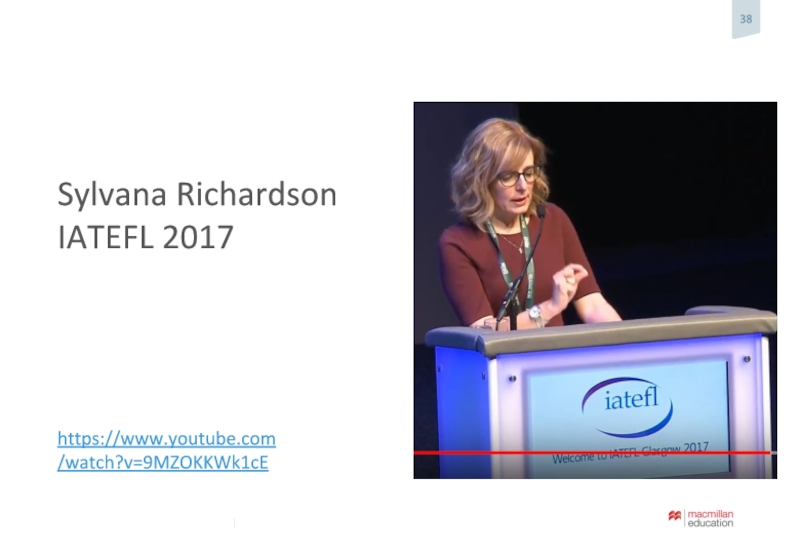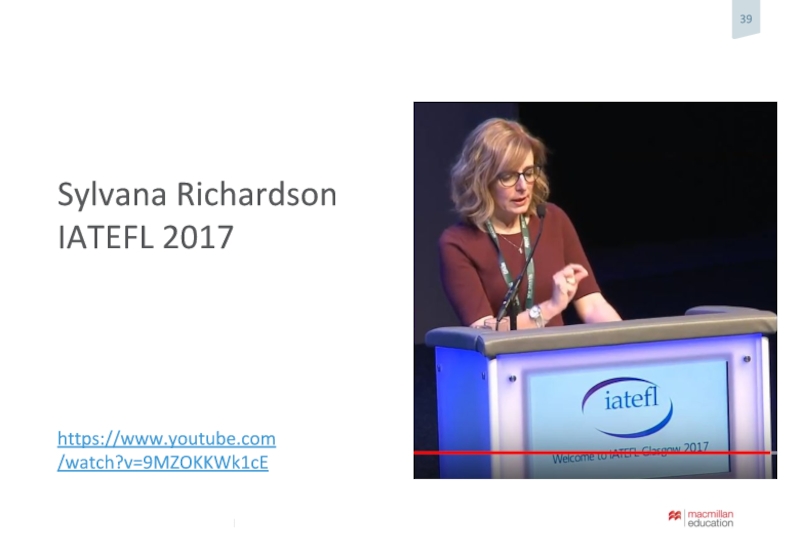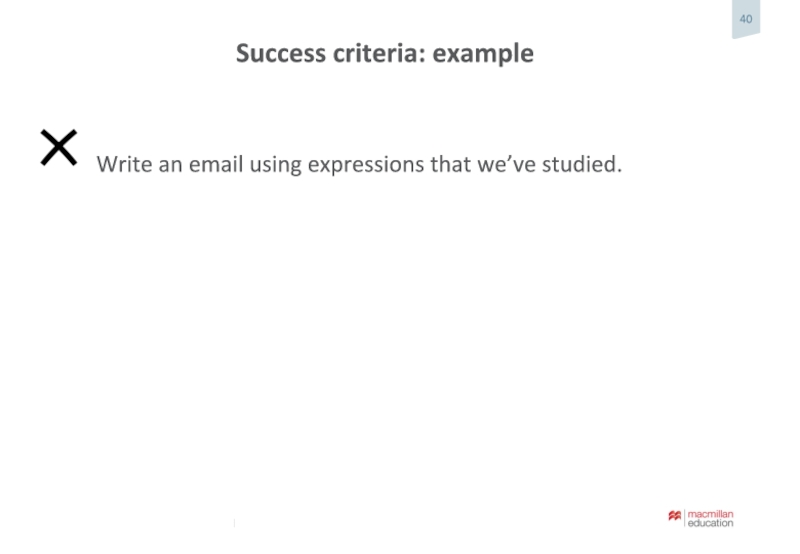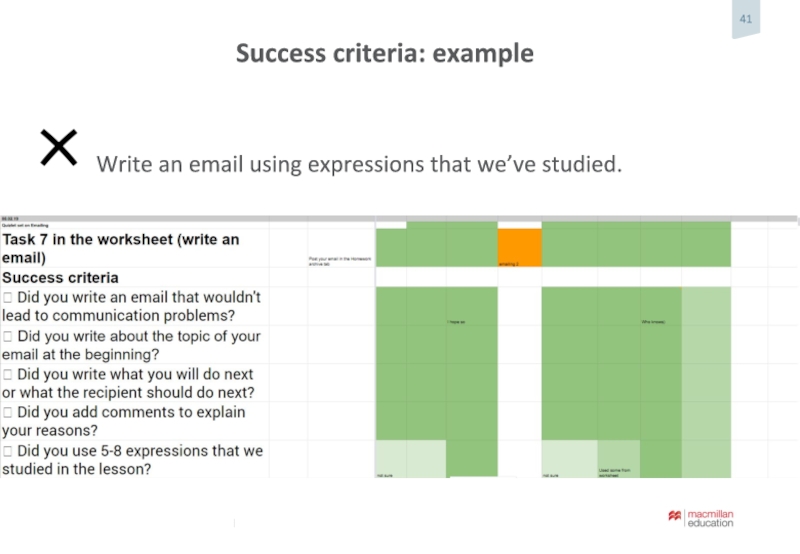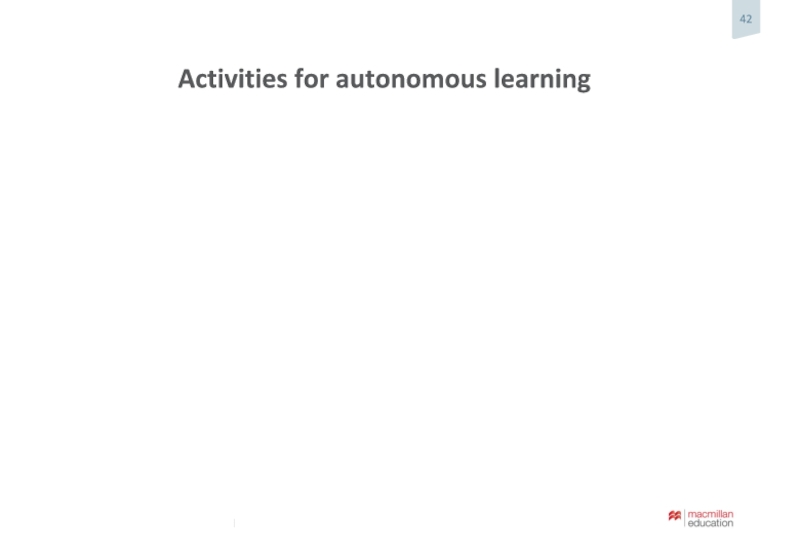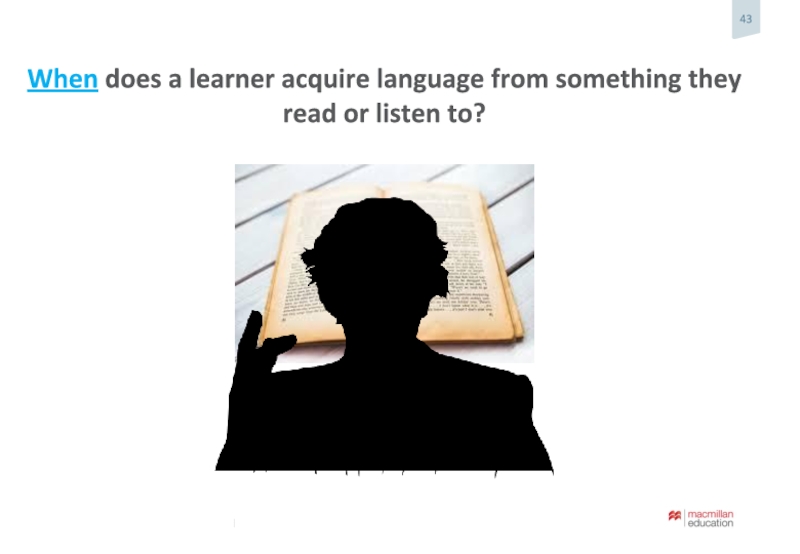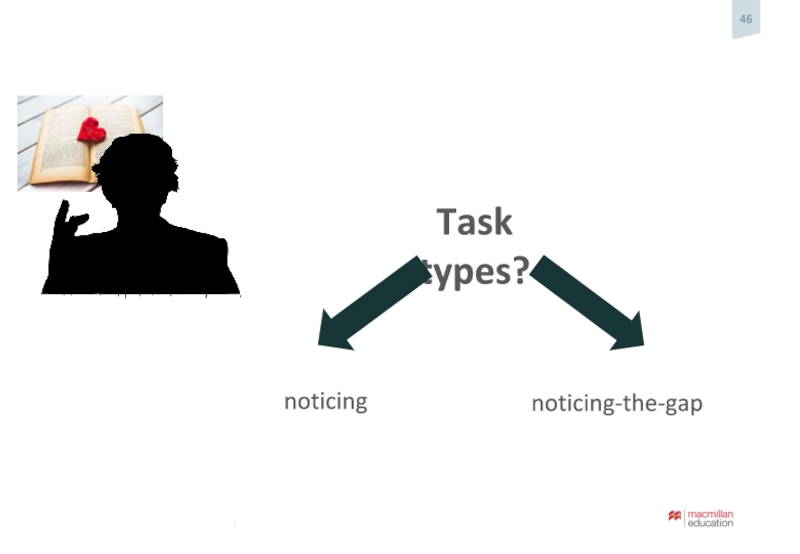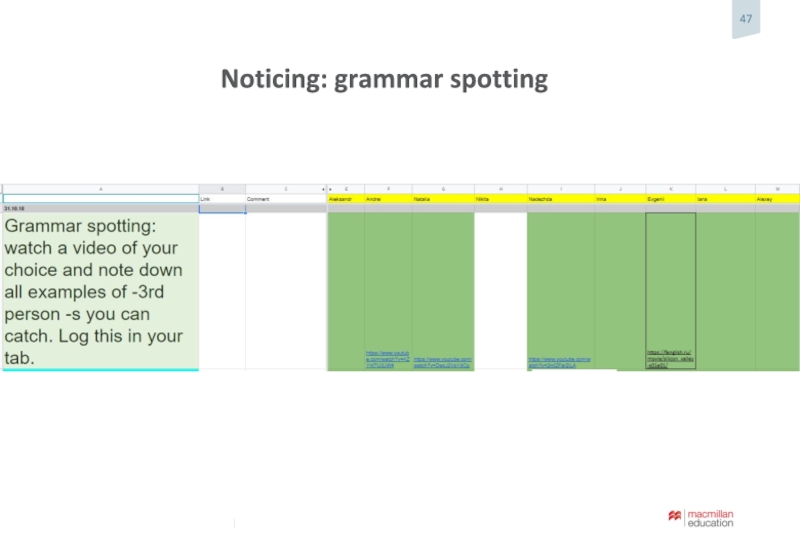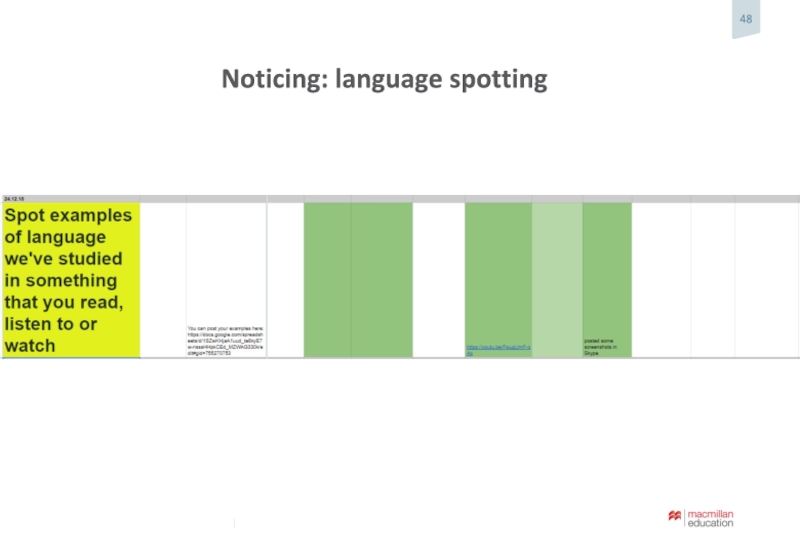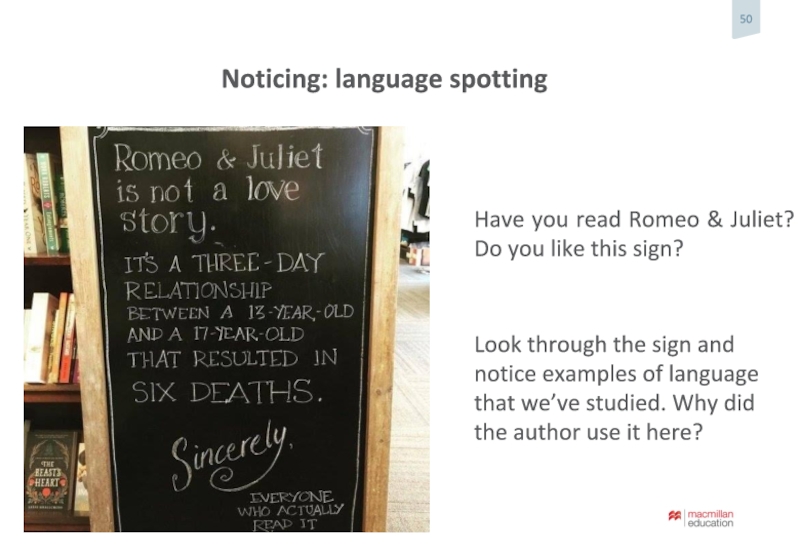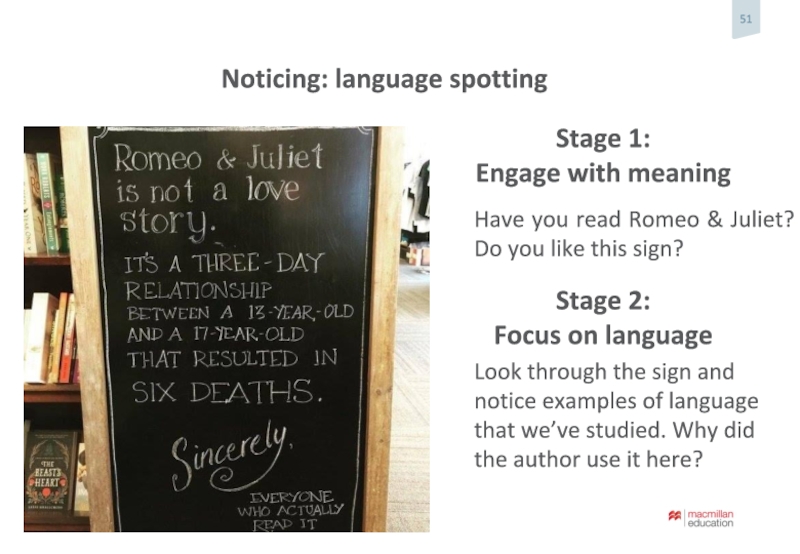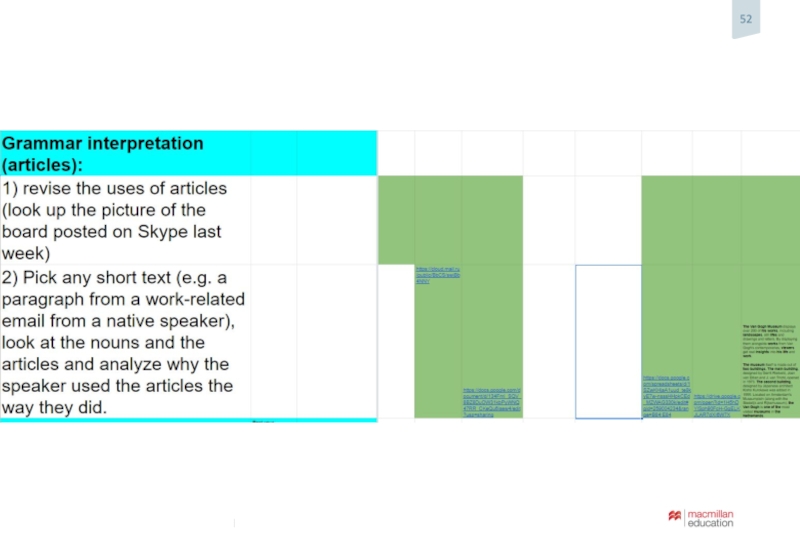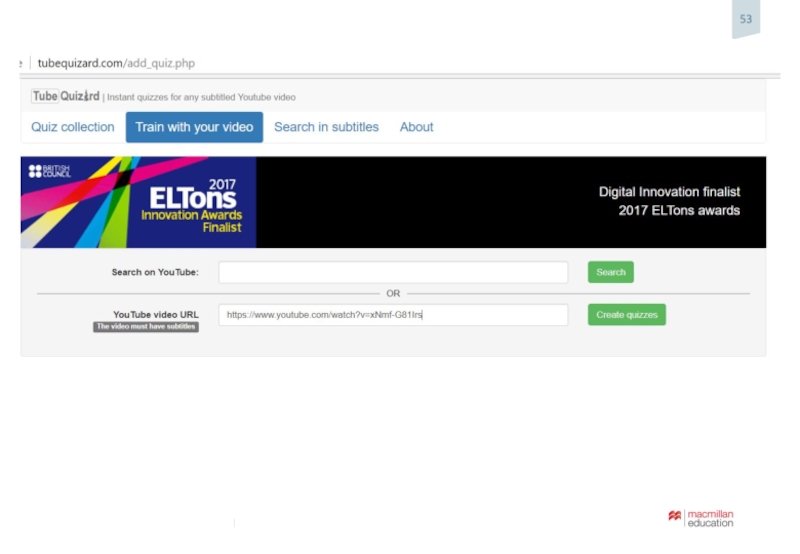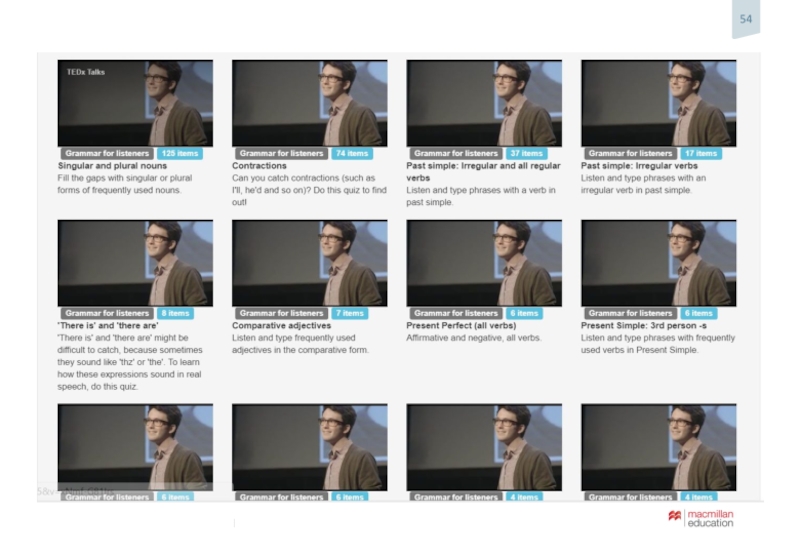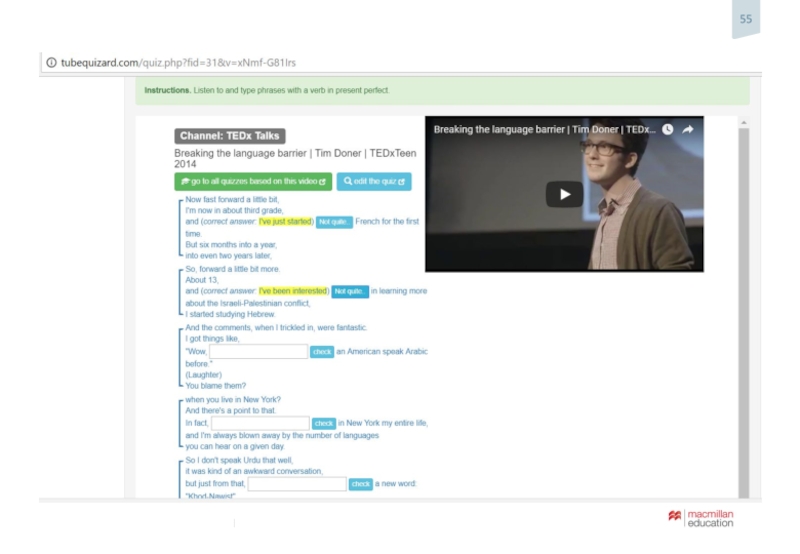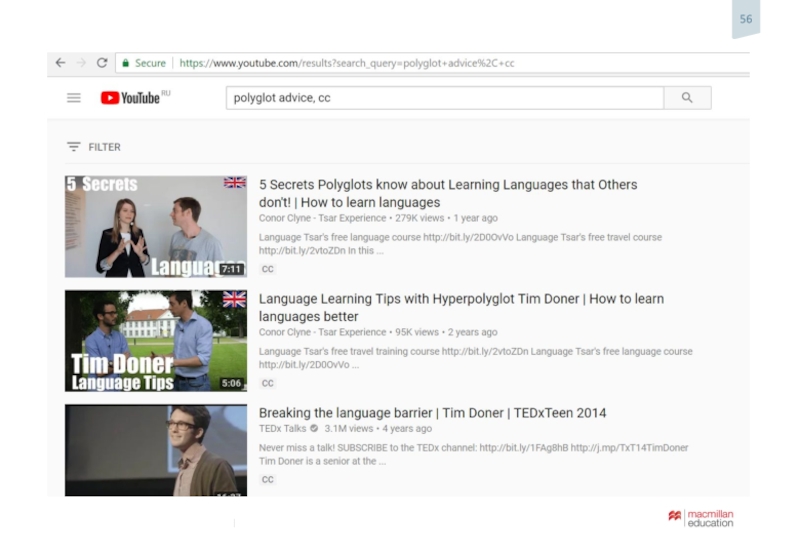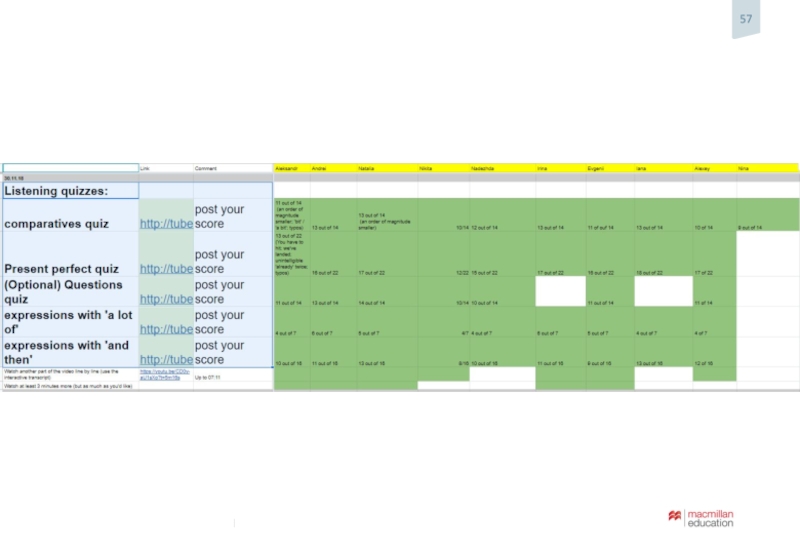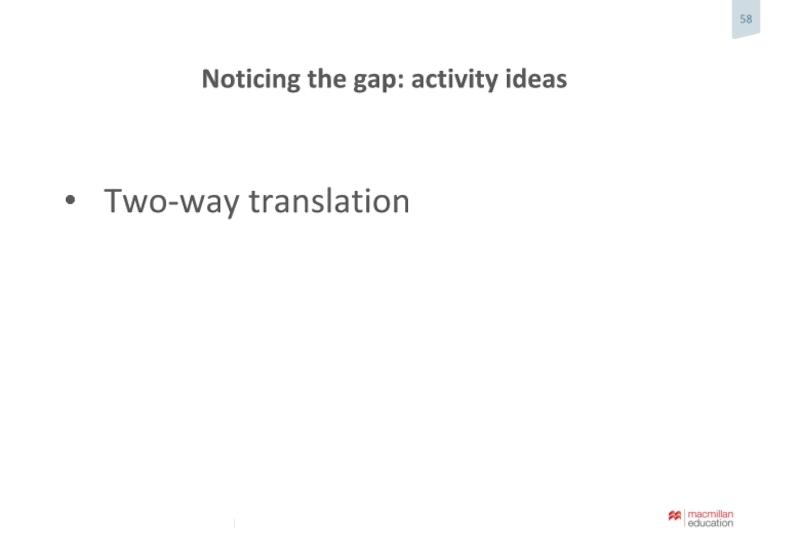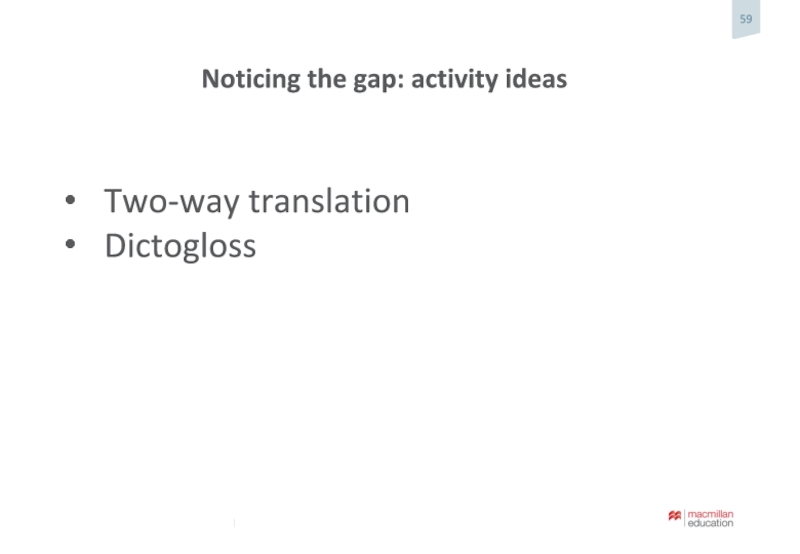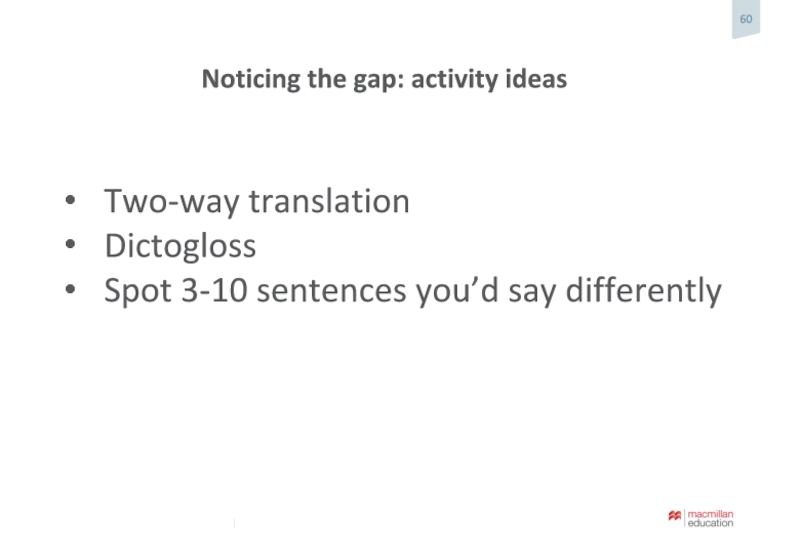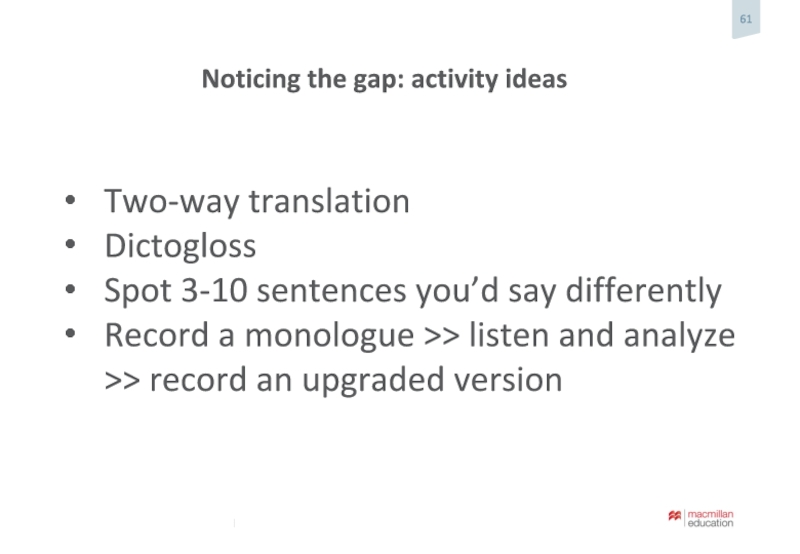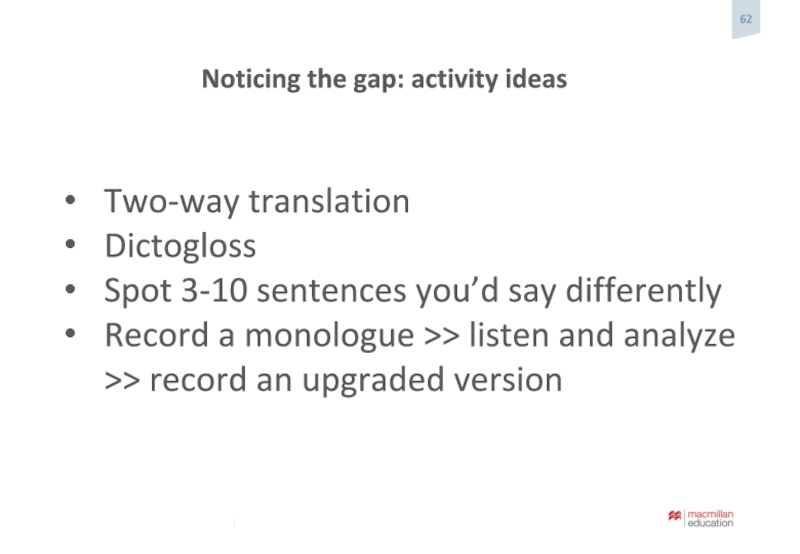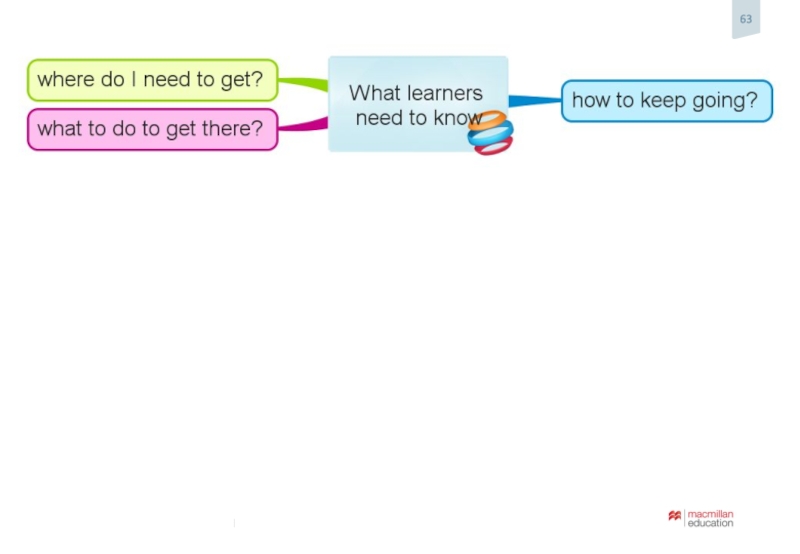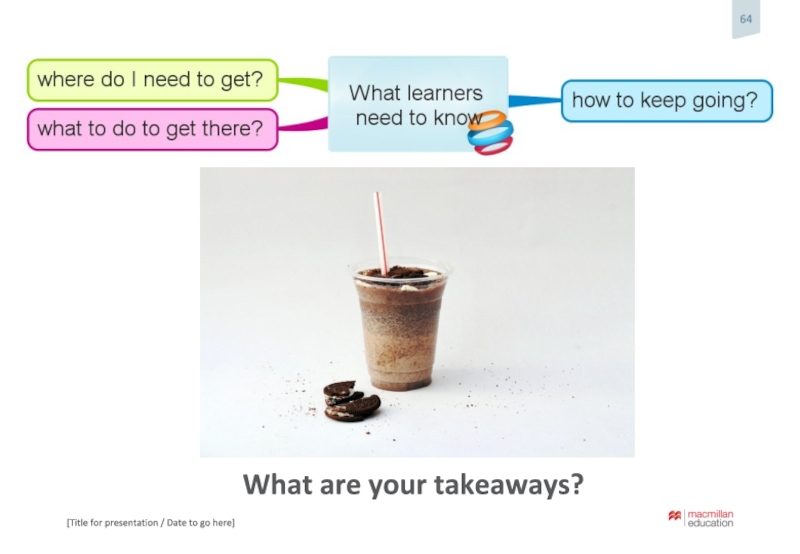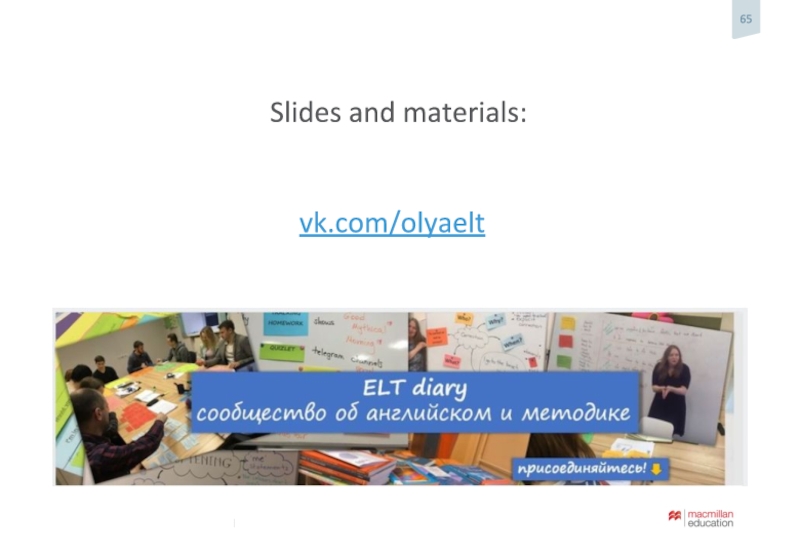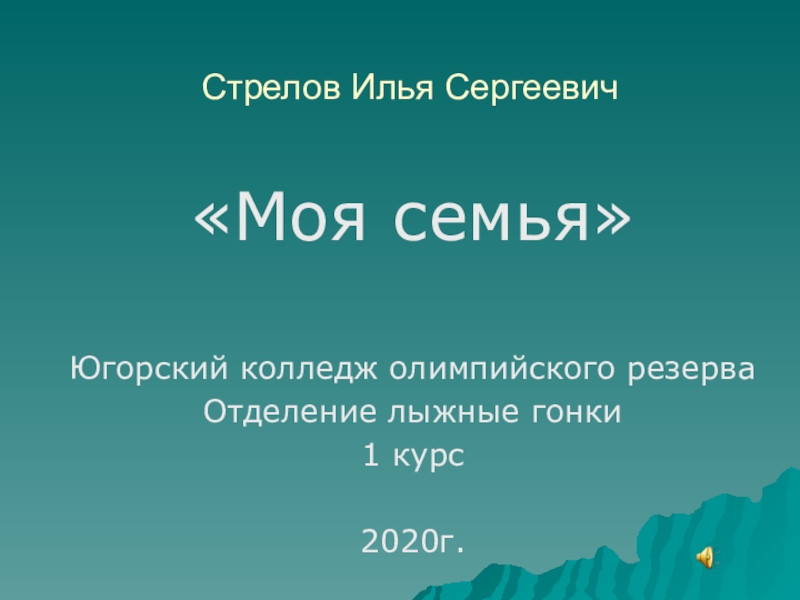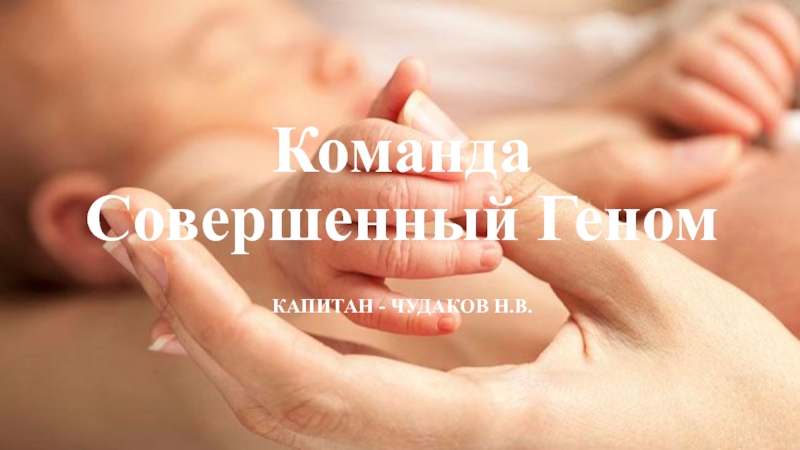Разделы презентаций
- Разное
- Английский язык
- Астрономия
- Алгебра
- Биология
- География
- Геометрия
- Детские презентации
- Информатика
- История
- Литература
- Математика
- Медицина
- Менеджмент
- Музыка
- МХК
- Немецкий язык
- ОБЖ
- Обществознание
- Окружающий мир
- Педагогика
- Русский язык
- Технология
- Физика
- Философия
- Химия
- Шаблоны, картинки для презентаций
- Экология
- Экономика
- Юриспруденция
Using technology to promote learner autonomy and good study habits
Содержание
- 1. Using technology to promote learner autonomy and good study habits
- 2. Слайд 2
- 3. Slides and materials:vk.com/olyaelt
- 4. Слайд 4
- 5. Successful learners: what makes them successful?
- 6. autonomystudy strategiesgoalsSuccessful learners: what makes them successful?
- 7. Unsuccessful learner – why? autonomystudy strategiesgoals
- 8. Слайд 8
- 9. What does it mean ‘to get to B2’?What does it mean ‘to get to B2’?
- 10. Unsuccessful learner – why? autonomystudy strategiesgoals
- 11. Слайд 11
- 12. What does it mean ‘to get to B2’?
- 13. What does it mean ‘to get to B2’?
- 14. Слайд 14
- 15. https://www.cambridgeenglish.org/images/168619-assessing-speaking-performance-at-level-b2.pdf Cambridge English: Assessing speaking performance at level B2
- 16. Слайд 16
- 17. Provide the learners with an ‘out-of-class learning’
- 18. Provide the learners with an ‘out-of-class learning’
- 19. Provide the learners with an ‘out-of-class learning’
- 20. Provide the learners with an ‘out-of-class learning’
- 21. Provide the learners with an ‘out-of-class learning’
- 22. Слайд 22
- 23. Слайд 23
- 24. Слайд 24
- 25. Provide the learners with an ‘out-of-class learning’
- 26. Provide the learners with an ‘out-of-class learning’
- 27. Provide the learners with an ‘out-of-class learning’
- 28. What helps to sustain motivation?
- 29. What helps to sustain motivation?…encourage your students
- 30. Homework log
- 31. Слайд 31
- 32. Homework log
- 33. Homework log
- 34. Homework log
- 35. Homework log
- 36. Homework log
- 37. Homework log
- 38. Homework log
- 39. https://www.youtube.com/watch?v=9MZOKKWk1cE Sylvana Richardson IATEFL 2017
- 40. https://www.youtube.com/watch?v=9MZOKKWk1cE Sylvana Richardson IATEFL 2017
- 41. Write an email using expressions that we’ve studied. Success criteria: example
- 42. Write an email using expressions that we’ve studied. Success criteria: example
- 43. Activities for autonomous learning
- 44. When does a learner acquire language from something they read or listen to?
- 45. А я бы сказал ‘he tells’..Hm, ‘he says’? We studied this!
- 46. Those linguistic forms in the input that
- 47. Task types?noticingnoticing-the-gap
- 48. Noticing: grammar spotting
- 49. Noticing: language spotting
- 50. Have you read Romeo & Juliet? Do you like this sign?
- 51. Noticing: language spottingHave you read Romeo &
- 52. Noticing: language spottingHave you read Romeo &
- 53. Слайд 53
- 54. Слайд 54
- 55. Слайд 55
- 56. Слайд 56
- 57. Слайд 57
- 58. Слайд 58
- 59. Noticing the gap: activity ideasTwo-way translation
- 60. Noticing the gap: activity ideasTwo-way translationDictogloss
- 61. Noticing the gap: activity ideasTwo-way translationDictoglossSpot 3-10 sentences you’d say differently
- 62. Noticing the gap: activity ideasTwo-way translationDictoglossSpot 3-10
- 63. Noticing the gap: activity ideasTwo-way translationDictoglossSpot 3-10
- 64. Слайд 64
- 65. What are your takeaways?What are your takeaways?
- 66. Slides and materials:vk.com/olyaelt
- 67. Скачать презентанцию
Слайды и текст этой презентации
Слайд 15https://www.cambridgeenglish.org/images/168619-assessing-speaking-performance-at-level-b2.pdf
Cambridge English:
Assessing speaking performance at level B2
Слайд 17Provide the learners with an ‘out-of-class learning’ menu – a
list of resources and activities they can do on their
own.Ask them to keep a diary.
Follow up on their out-of-class work around once a month.
What we did initially:
Слайд 18Provide the learners with an ‘out-of-class learning’ menu – a
list of resources and activities they can do on their
own.Ask them to keep a diary.
Follow up on their out-of-class work around once a month.
What we did initially:
Слайд 19Provide the learners with an ‘out-of-class learning’ menu – a
list of resources and activities they can do on their
own.Ask them to keep a diary.
Follow up on their out-of-class work around once a month.
What we did initially:
Слайд 20Provide the learners with an ‘out-of-class learning’ menu – a
list of resources and activities they can do on their
own.Ask them to keep a diary.
Follow up on their out-of-class work around once a month week.
What we did initially:
Слайд 21Provide the learners with an ‘out-of-class learning’ menu – a
list of resources and activities they can do on their
own.Ask them to keep a diary.
Follow up on their out-of-class work around once a month week.
What we did initially:
Слайд 25Provide the learners with an ‘out-of-class learning’ menu – a
list of resources and activities they can do on their
own.Ask them to keep a diary. Provide them with examples of a diary. Alternative: only sharing, no diaries.
Follow up on their out-of-class work around once a month week.
What we did initially:
Слайд 26Provide the learners with an ‘out-of-class learning’ menu – a
list of resources and activities they can do on their
own.Ask them to keep a diary. Provide them with examples of a diary. Alternative: only sharing, no diaries.
Follow up on their out-of-class work around once a month week.
What we did initially:
Слайд 27Provide the learners with an ‘out-of-class learning’ menu – a
list of resources and activities they can do on their
own. Demonstrate.Ask them to keep a diary. Provide them with examples of a diary. Alternative: only sharing, no diaries.
Follow up on their out-of-class work around once a month week.
What I do now:
Слайд 29What helps to sustain motivation?
…encourage your students to make ‘to-do’
lists, to chip away at their goals, and reward themselves
for each goal accomplished.Rachael Roberts
Motivating your students to go beyond the intermediate plateau
https://www.teachingenglish.org.uk/blogs/rachael-roberts/motivating-your-students-go-beyond-intermediate-plateau
Слайд 46Those linguistic forms in the input that are noticed (i.e.
consciously attended to) are more likely to be acquired than
those that are not noticed.Acquisition is also enhanced when learners notice-the-gap (i.e. pay attention to the difference between the input and their own output).
Слайд 51Noticing: language spotting
Have you read Romeo & Juliet?
Do you
like this sign?
Look through the sign and notice examples
of language that we’ve studied. Why did the author use it here?Слайд 52Noticing: language spotting
Have you read Romeo & Juliet?
Do you
like this sign?
Look through the sign and notice examples
of language that we’ve studied. Why did the author use it here?Stage 1:
Engage with meaning
Stage 2:
Focus on language


